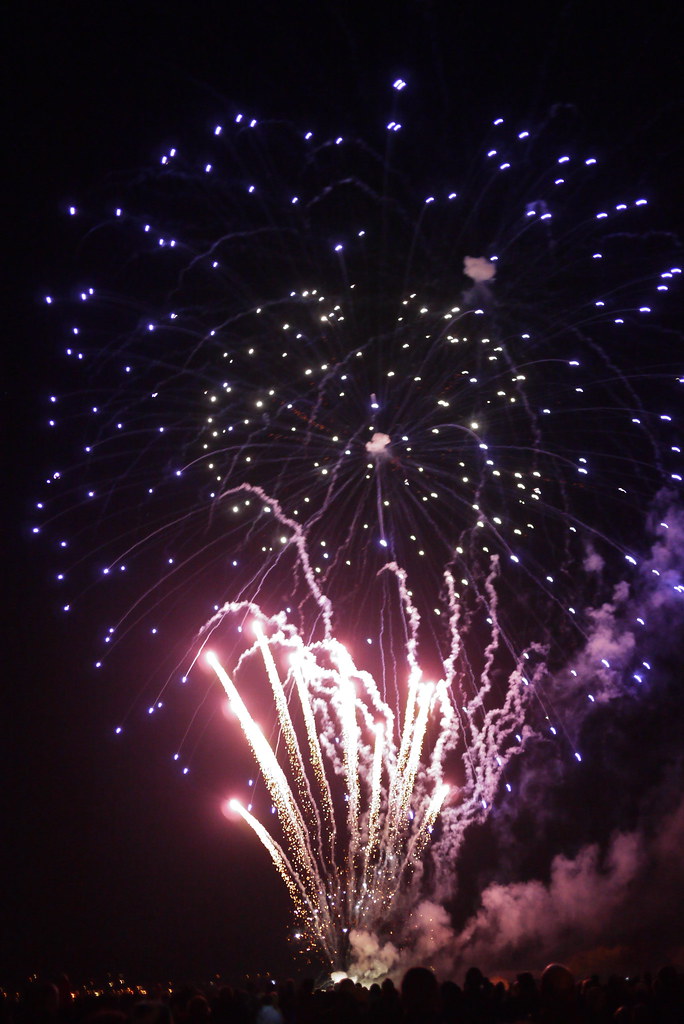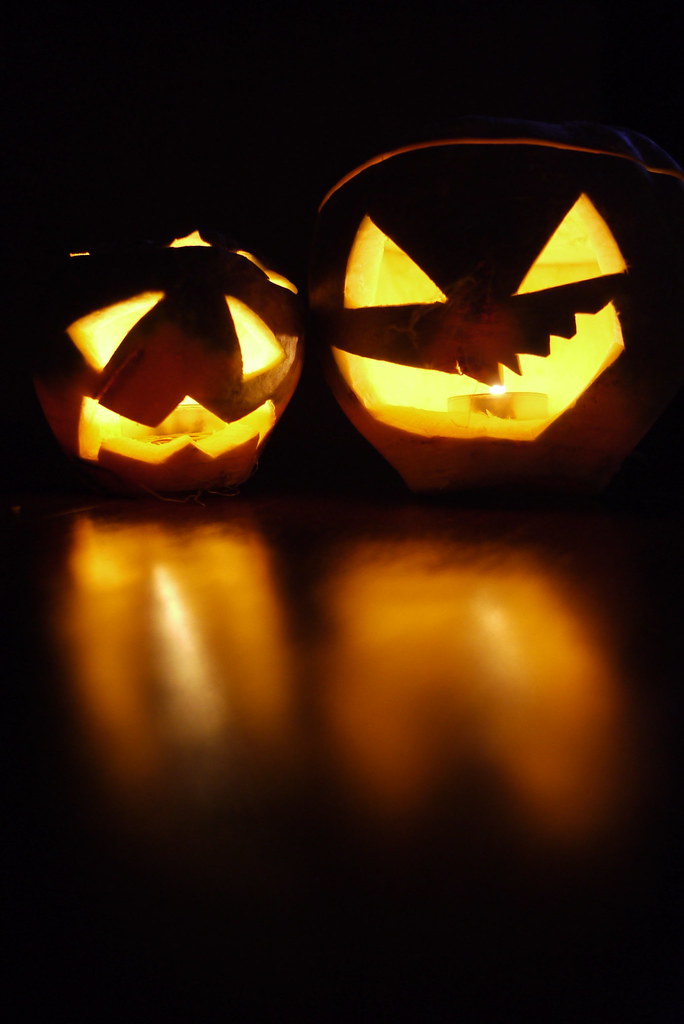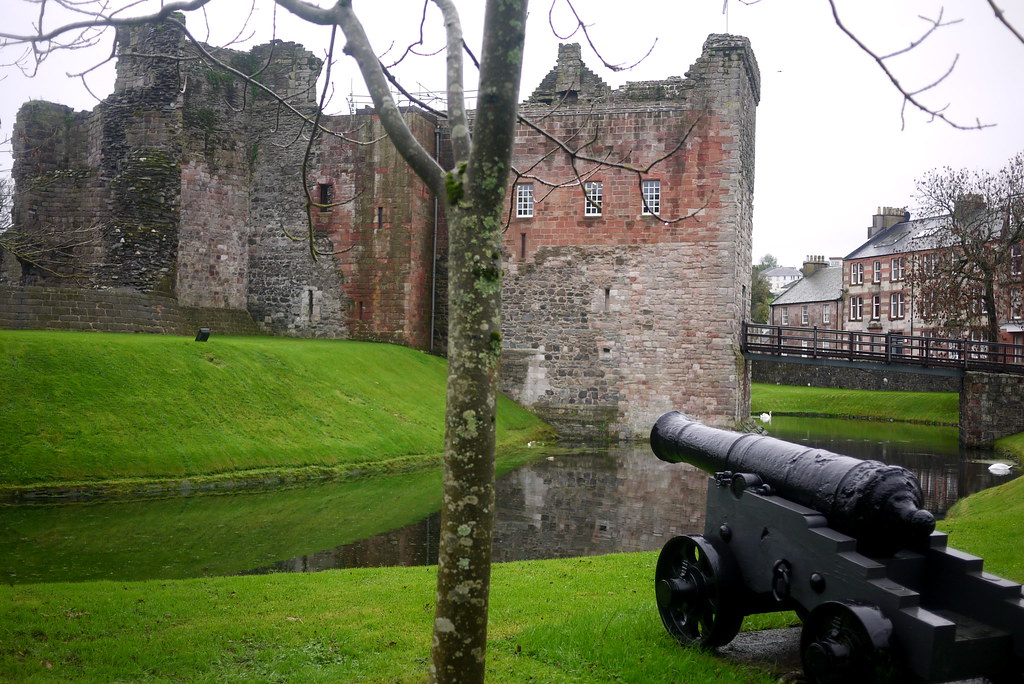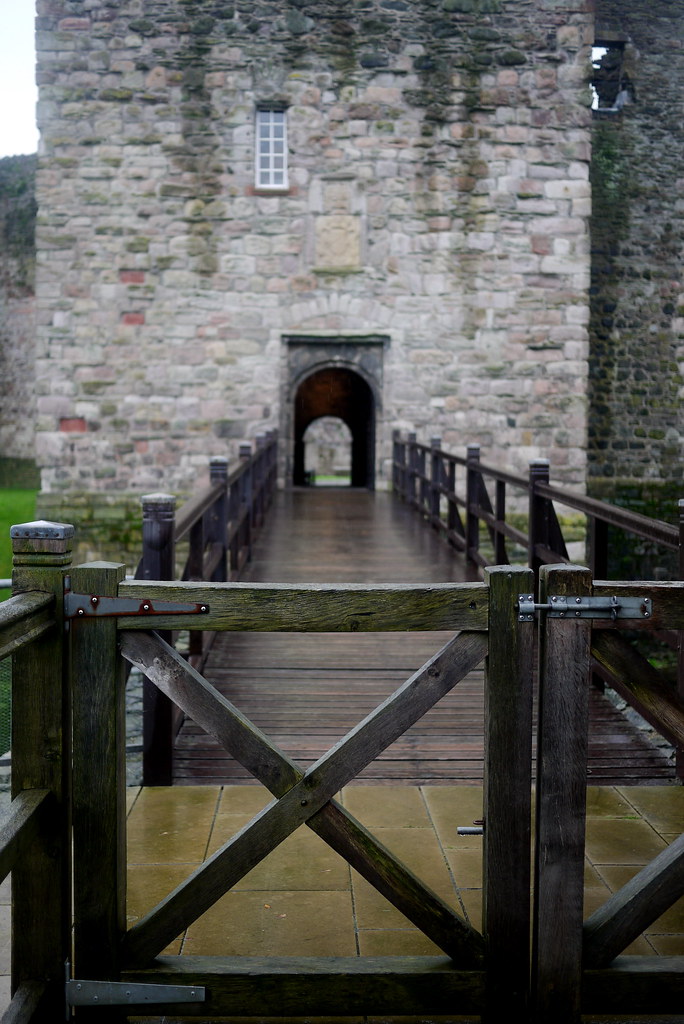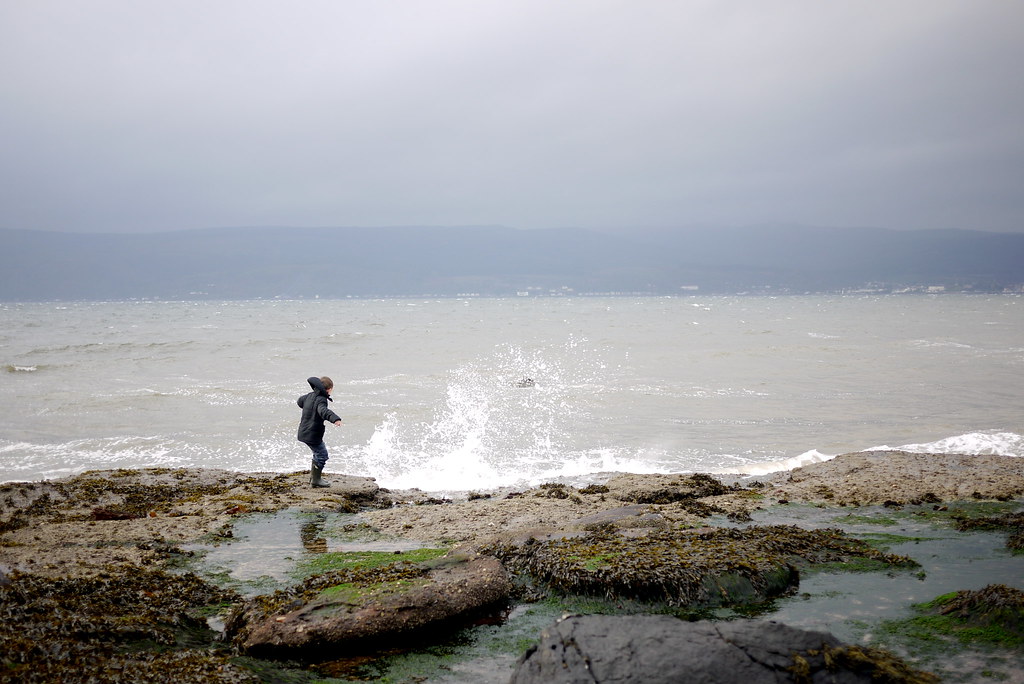On this day last year my then five-year-old son had the joy of tasting the delights of the
nation's favourite fizzy beverage (resulting in several hours of bouncing off walls afterwards, of course). This year will be a little quieter, I hope, since the kids are off school today because of the national strike.
In theory we'll be going to the supermarket today, if the roads have cleared from all the flooding we had yesterday - the town nearest to us was completely cut off in the floods, and we had half of this month's average rainfall come down in 24 hours - about 2 inches, I believe, often coming down as huge chunks of hail. With no sign of any let up in the weather any time soon I suspect it's only going to get worse; this month has been extremely wet already and the ground is absolutely sodden. We're not too badly off where we are - on top of a hill - but the dogs are feeling thoroughly bored and forlorn.
The weather is officially
dreich. A good word, that. In honour of St Andrew's Day, it's only right to celebrate all things Scottish. So how about some more good Scots words?
Awfy - awful
Baw - ball
Blether - idle chatter
Blootert - extremely drunk
Boak (bowk) - retch, vomit (as in: 'Och wheesht, ye'll gimme the boak' Oh shut up, you'll make me sick
Boggin - stinking, no good
Bowfin - smelly, stinking. Worse than mingin
Braw - handsome, fine
Breeks - trousers ('pants'), i.e. breeches
Broon - brown
But and ben - a type of two-roomed cottage, generally with the door in the middle and a window either side
Cludgie - toilet
Corbie - raven or crow; a generic term for corvids
Coup (cowp) - a rubbish dump, tip
Crabbit - grumpy, grouchy, ill-tempered
Craw - crow
Druthy - thirsty
Droukit - soaked, drenched, sopping wet (or else: drookeet)
Dunt - bump ('A dunted ma heid' - I bumped my head)
Fair - somewhat, very
Feart - frightened afraid
Foosty - dank, damp-smelling
Frae - From
Gallus - self-confident, outgoing, cheeky or daring
Geggie - mough (as in: 'Wheesht yer geggie!' Shut your mouth)
Gies - 'give us' (as in me - 'Gies it' Give me it)
Gin - if
Glaikit - silly, foolish
Greet - cry
"Don't cry, there's more in the pot."
Gubbit (gubbed) - beaten, thrashed, broken
Haud - hold (as in: 'Haud yer wheesht!' Hold your wheesht; Be quiet!)
Haver - talk nonsense (as in The Proclaimer's song "And when I'm haverin," in I Would Walk 500 Miles)
Hen - a familar (but also somewhat patronising, depending on context) way of addressing a woman, a term of endearment. "Dinnae fash yersel' hen" Don't bother yourself, hen/Don't go to any trouble, hen
Het - heated (as in 'Het Pint'); het up - worked up
Hoachin - absolutely rotten, maggot-ridden
Hoodie - a type of crow, but also used as a general term for all kinds of corvids
Howfin - stinking; also: howling
Howk - dig, gouge
Ilka - every
Keek - look; 'keek!' is a Scots equivalent of 'peekaboo!' with babies
Ken - know, understand (as in: 'Ah dinna ken' I don't know; 'Ah ken fine damn well' I understand perfectly
Kich (or keech) - shit
Leid - language
Licht - light (and as such: bricht - bright, nicht - night etc)
Lum - chimney (as in: 'Lang may lum reek!' Long may your chimney smoke; wishing someone the continued prosperity to be able to keep their fire going strong)
Mawkit (maukit) - literally, it refers to maggots (mawks), it's used to refer to something that's absolutely rotten, filthy; often used to describe children (as in: 'Lookit ye, yer mawkit!')
Mickle - a lot, a great amount
Mind - remember (as in: 'Dae ye mind yon lassie?' Do you remember that girl (over there)?
Mingin - stinking
Neuk - corner (nook)
Ony - any
Piece - slice of bread with something on it, or a sandwich; pieces and jam/jeely piece - jam sandwich
Peely wally - pale, sickly-looking
Plook - spot (acne)
Shoogle - shake, bounce (as in, 'Am shooglin the wee bairn oan ma knee' I'm bouncing the baby on my knee); also shooglie - shaky
Skelp - smack (as in: 'Wheest, or Ah'll gie ye a skelp aroun yer heid!' Quiet, or I'll give you a smack around the head!)
Skelpit - smacked
Sic - such
Sleekit - sly, cunning, slick
Sook - suck; someone who ingratiates themselves, sucks up, an affectionate animal ('Ya wee sook')
Tattie (tottie) - potato
Telt - told
Thegither - together
They - those (as in: 'See they weans' See those children)
Thrawn - stubborn, obstinate, contrary, difficult or awkward; misshapen, twisted
Toaty - tiny (as in: 'toaty wee footsies')
Unco - strange, unknown, odd, great, or as an adverb: very
Wan - one
Wean - child (possibly a contraction of 'wee ane' - wee one; or else referring to a child that has now been weaned (although it's not pronounced the same) according to some)
Wheesht - hush, shush. Also found in Gàidhlig - 'Ist a-nis!' Hush now
Widnae - would not (also dinna - didn't, wisnae - wasn't etc)
Yin - one (referring to someone, a thing); Big Yin (Big One - a nickname for the comedian Billy Connolly)
And finally, some insults and swear words (consider yourself warned!). These are generally applied liberally in conversations, and calling someone such names can be a term of endearment or an insult depending on the context. There aren't many words that are considered to be extremely taboo, and the 'f' and the 'c' word tend to get thrown around
a lot in social conversation, almost of like a form of punctuation:
Bampot - someone who's a bit daft, crazy, a silly idiot
Bawbag - ballbag (i.e. scrotum) also bawheid, fanny baws, cunty baws
Besom - a difficult woman. Can also be used affectionately - 'Ye daft besom'
Clarty (or in Glasgow, 'clatty') - dirty; may also be used to describe a lady of loose morals
Cuntit - 'Cunted' - as in pissed (drunk) to the extreme, paralytic, exhausted
Daftie - a harmless idiot, silly
Dobber - idiot, tosser, wanker (kinda rude, associated with a penis; in England 'dobber' can refer to someone who tells tales, so be careful!)
Dunderheid - idiot, simpleton
Eejit - idiot
Erse - arse ('A face like a skelpit erse' - A face like a slapped arse)
Fud - 'the female genitalia'; less harsh than calling someone the 'c' word; an idiot
Jobbie - turd
Numpty - fool, moron
Nyaff - an irritating person
Pish - piss; can be used in a variety of ways, e.g. not very good ('That's pish!'), nonsense ('Yer talkin' pish'), an expression of disdain, pished - drunk, annoyed
Scunner - nuisance, or else a bore, sickening or disgusting person
Teuchter - a pejorative term for a country person, north of the central belt (especially in the sense of a Gàidhlig speaker)
Tollie - turd
Tube - (pronounced 'choob') idiot, tosser

















